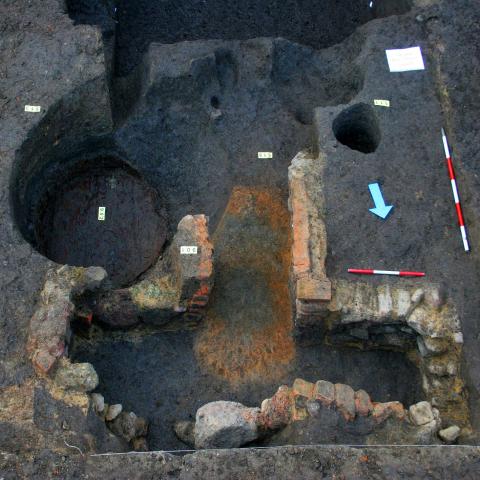Nálezy hvozdových pecí z archeologických výzkumů v prostoru sladovnické čtvrti v Brně

Autoři
Příspěvek referuje o nálezech dvou objektů z historického předměstí Brna, které můžeme interpretovat jako součásti otopných zařízení sloužících na sušení sladu (tzv. hvozdových pecí). Jejich datování do období druhé poloviny 13. a první poloviny 14. století je řadí do skupiny nejstarších dokladů těchto zařízení z období vrcholného středověku na území českých a polských zemí. Výrazným fenoménem tohoto předměstí bylo sladovnictví, podle něhož bylo někdy označováno jako Sladovnické. Místa, na nichž byly objekty objeveny, lze spojovat se zástavbou, která byla na západě vymezena Malou ulicí (platea Parva) a na jihu Svrateckým náhonem. Podle výpovědi archivního materiálu ze 14. století zde měli své dvorce a sladovny zámožní sladovníci.
Finds of kilns for drying malt in archaeological surveys in the area of the „malting district“ in Brno
The contribution reports the find of two objects in the historical suburb of Brno, which can be interpreted as parts of kilns used for drying malt. They have been dated to the 2nd half of 13th and the 1st half of the 14th century, making them one of the oldest known devices of their kind from the late medieval age in the Czech and Polish lands. A substantial phenomenon of these suburbs was malting, making them occasionally referred to as ‚Malting suburbs‘. The site where the objects were discovered can be linked to housing development delimited by the Malá street (platea Parva) from the West, and the Svratka river race channel from the South. According to archive material from the 14th century, the wealthy and prosperous maltsters had their undertakings in the sector.
